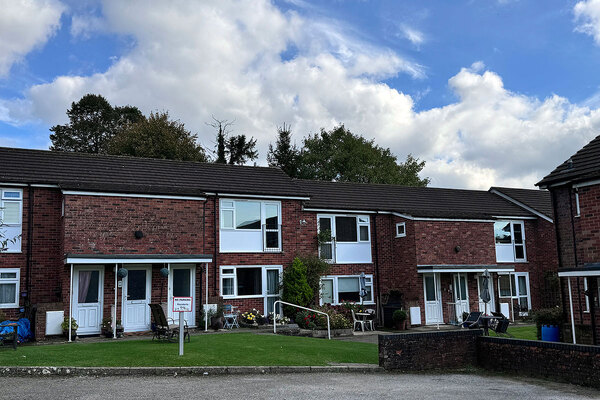Digital explosion
There has been a surge of new information and communications technology that could save social landlords precious time and money. But, as Keith Cooper reports, only if they know how to use them.
Now is the time to remove ‘revamp IT system’ from your ‘to do’ list. Right? Wrong. In this climate of cutbacks it is tempting to edge away from splashing out cash on new technology or spending valuable time on making the most out of the systems already installed. In many instances this could, however, be a big mistake. ‘Invest to save’ is a common cliché but one which seems particularly apt when applied to information and communication technologies. So are social landlords missing a technology trick?
Research this year by the public sector IT professionals’ umbrella group the Society of Information Technology Management shows that introducing relatively simple technology has big benefits. Its Better connected study reveals that landlords can save hundreds of thousands of pounds each year by sending text messages rather than letters to their tenants. A landlord with 2,500 homes could make an average annual saving of £116,500, it states. Such figures demonstrate the considerable potential of technology to save time and money, according to Martyn Rees, strategy director at IT consultancy Capita Software Services.
He describes social landlords’ use of technology as a ‘little piecemeal’. ‘Some senior staff within social landlords are simply not aware that technology is available to assist them,’ he adds. ‘Sometimes there is resistance to introducing new technology.’
Time and money are the two biggest barriers to the introduction of new technology for most housing providers, according to several IT professionals. Derek Steele, managing director of social housing software company Mobysoft, says landlords’ budgets are becoming increasingly stretched. ‘They are also very busy and too time-limited to look at new things.’ Social landlords have lost any appetite for technology for technology’s sake, he adds. ‘Clients are saying: “this has to work”’.
In response, Mobysoft allows landlords to pilot its products before they commit to buying them. It is a strategy that has proved effective. When housing association Moat took up such an offer for its rent arrears module, it made savings of £37,000 in three months (see box: Red letter days).
Maximising capabilities
But forking out for cutting-edge technology is not the only way significant savings can be realised. Making the most of what is already in place is also a useful exercise, according to Ian Lever, ICT solutions director at Tribal. ‘A lot of social landlords don’t understand the full functionality of the systems they have got,’ he says. ‘On average, our experience shows that people use about 75 per cent of a system’s functionality.’
Inefficient use of an IT system often creeps in at the start, he adds. Tribal is often called in by landlords to assess how well a new technology has been introduced. ‘There are a lot of organisations out there which have implemented systems a few years ago but they were not implemented very well,’ Mr Lever says. ‘In some instances they have had to do a full re-implementation to get the best out of the system.’
Another way in which landlords can improve efficiency is by trying to fully harness the huge amounts of information they already have loaded up into their systems.
The Guinness Partnership has just embarked on the Herculean task of inputting facts and figures on its 60,000-home portfolio into an asset management database developed by consultancy Savills (see box: Making the most of your assets).
Robert Grundy, joint head of housing investment consultancy at Savills, says its product helps landlords exploit more fully the valuable data they already hold. ‘The potential use of that data isn’t being fully realised. This is about how they can make more effective use of their information,’ he says. One association Savills worked with was able to recapitalise its failing business by using the database software to pinpoint and sell off poorly performing parts of its portfolio.
Another area in which landlords appear prepared to swallow the cost of technology investment is sheltered housing. More up-to-date telephone networks are being installed in schemes to help wardens and scheme managers work more flexibly and efficiently. Lambeth Council’s decision to replace its 25-year-old communication system with a modern exchange, for example, has helped it reduce its number of wardens from 27 to 22 (see box: Ringing the changes).
Long-term gains
Carl Atkey, technical lead at consultancy Cirrus, which advised Lambeth on the new system, says social landlords are less likely to baulk at the cost of introducing new technology if it can be shown to improve efficiency. ‘If a local authority is looking at a one-off system up they will go purely at costs,’ he explains. ‘If a local authority or housing association are looking at a roll-out of a system where they can make savings elsewhere they will be very open.’
The modern PBX telephone exchange system that Lambeth installed was particularly useful for landlords who wanted to reduce the number of managers, wardens or carers, he adds. One sheltered housing provider his company advised had cut its warden head count from 13 to four after installing the modern-style exchange. ‘It is a good investment for the future,’ Mr Atkey says.
Unfortunately, social landlords are likely to see further changes to their workforce over the next few years, says Ian Chisholm, associate partner at consultancy John Rowan & Partners - he points out another good reason not to cutback on new technology proposals in this climate of austerity.
‘In these times of spending cuts and uncertainty, the chances are good that certain people will leave organisations,’ states Mr Chisholm. ‘Having information systems in place will ensure that their knowledge does not walk out the door with them.’
Red letter days
Keeping tabs on tenants who fall into rent arrears can be a costly and time-consuming business. Housing association Moat found an efficient way to tackle low-level arrears in an intelligent text messaging system developed by Mobysoft. Its rent arrears module pinpoints and text messages tenants who have fallen behind on the rent payments by sifting through the associations’ records.
But the clever bit is how the programme categorises arrears as technical or genuine, says Derek Steele, managing director of Mobysoft. Tenants may be in technical arrears simply because they pay their rent monthly or by direct debit - the software only texts genuine cases of arrears. It is set up to message any of Moat’s 10,000 general needs tenants who rack up between £10 and £50 of arrears. This helped the association collect £37,000 in late payments in its first three months and saves each of its 17 income recovery officers half-a-day’s work each week, states Femi Odunaike, head of income recovery and financial inclusion at Moat. ‘It used to be an area of concern for us and it has been improved a great deal.’
The challenge of tackling low-level arrears is a common concern among landlords, explains Mr Steele.
Moat has saved £13 per property per year after installing its rent arrears module.
Ringing the changes
A major revamp of sheltered housing in Lambeth last year gave the south London authority the perfect opportunity to update its decades’ old emergency call-out system.
The 25-year-old technology was replaced by a modern PBX telephone exchange system. Since October last year, Lambeth’s wardens provide ‘floating support’ - working across several schemes rather than just one. This restructuring allowed Lambeth to cut staff numbers from 27 to 22. Raffaella Somma, Lambeth’s business manager for its Careline 24 service, says advances in technology and cuts to supported housing budgets meant staff had to work in different ways.
‘It has enabled us to work more flexibly. Staff can cover more than one site and multi-task,’ she adds. Under the previous system, wardens had to plug their telephones into a wall socket to make a call. The new exchange allows them to communicate with tenants and other staff with hands-free headsets.
‘It is much more efficient,’ Ms Somma says.
The modern exchange will allow Lambeth to introduce other time-saving telecare and telehealth features. The system was installed following advice from consultancy Cirrus.
Making the most of your assets
The Guinness Partnership is turning to technology to help make the most efficient use of the mind-bogglingly large mine of information it holds on its 60,000-home property portfolio. The Savills asset management system does exactly what is says on the disk but in ways which differ from landlords’ usual approach.
Housing associations commonly work out each individual housing scheme’s financial performance on a case-by-case basis. Estate X in Penzance might be easily identified as a singular drain on resources. But how would it compare with estate Y in Great Yarmouth, or scheme Z in Shoreditch? This is what the Savills tool will tell you.
Raj Upadhyaya, group investment director at the Guinness Partnership, says he expects the database to deliver big payoffs after the investment of an enormous number of staff hours being spent inputting and checking the data. ‘I think it will save us a lot of money. It is also going to save technical and development staff time and help us make decisions.’
The database will help Guinness make decisions about whether to invest in particular areas and identify other areas where it is not cost effective to remain. ‘It is doing something that no human can do,’ Mr Upadhyaya adds.







